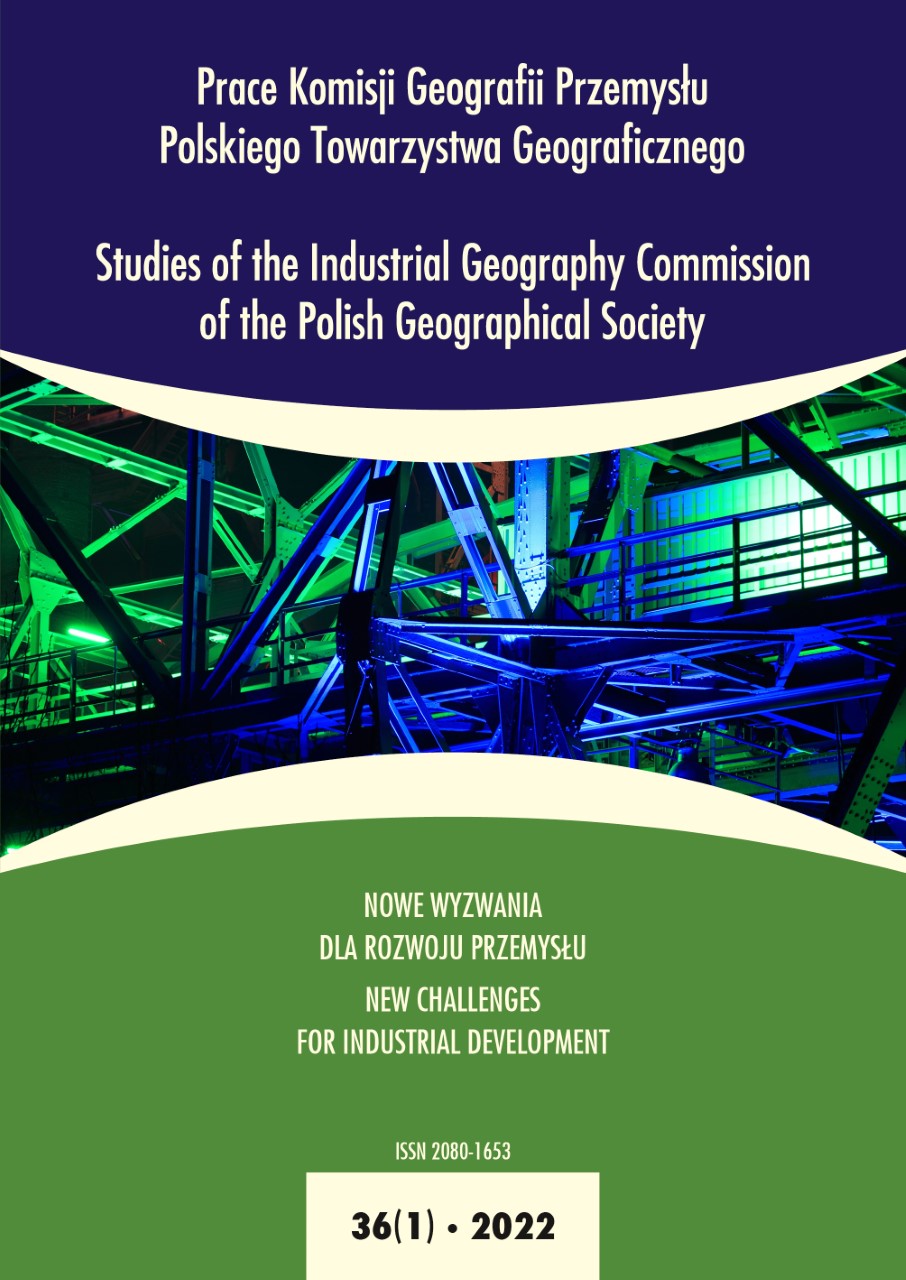Opportunities and barriers to the development of nuclear power in Poland in the context of the effects of PM10 and PM2.5 emissions
DOI:
https://doi.org/10.24917/20801653.361.3Keywords:
business model, energy policy, emission, location, nuclear energy, PM10, PM2.5, zero carbonAbstract
The article discusses the conditions, benefits and limitations of building a nuclear power plant in Poland. Considerations in this regard were based on the SWOT analysis. The most serious challenges accompanying this kind of investment project in the energy sector were presented in more detail. They have been preceded by from the performed statistical analysis of the data the sources of PM10 and PM2.5 dust emission, which has led to the conclusion that burning coal by households is the main cause of emissions.
They have negative consequences for the health and life of the population. In the situation where changes in the Polish energy system, related among others to the EU climate and energy policy, are necessary, it is vital to find alternative solutions. It is not easy. Renewable energy has a number of limitations (despite its many advantages), especially under adverse conditions such as few days of sunshine for photovoltaic technology. Therefore, this study aims to determine the legitimacy of building a nuclear power plant in Poland and verifies the research hypothesis that the lack of a stable energy policy is a serious barrier to the development of nuclear energy in Poland. Any decision on the changes in the energy system should be thoroughly analysed, taking into account not only the economic calculation, but also the time needed to make the necessary changes, social consequences (poor air quality in the case of coal burning) and environmental.
Downloads
Metrics
References
Czyżak P., Hetmański M. (2020), Analiza dotycząca granicznego roku odejścia od węgla w energetyce w Europie i Polsce, Warszawa: Instrat Policy Paper 01/2020. Bank Danych Lokalnych GUS (2022, 7 lutego). Pozyskano z: http://stat.gov.pl/
Celiński Z. (1991). Energetyka jądrowa. Warszawa: PWN.
Dalton D., Kraev K. (2021). Europe / Commission President Von Der Leyen Says EU Needs Nuclear Power. Pozyskano z: https://www.nucnet.org/news/commission-president-von-der-leyen-says-eu-needs-nuclear-power-10–2–2021
Departament Energetyki Jądrowej Ministerstwa Klimatu (2021, 29 września), Pozyskano z: https://www.naturalearthdata.com/
Dunal P., Płaziak M. (2014). Wpływ kryzysu gospodarczego na politykę klimatyczną Unii Europejskiej i jej konsekwencje dla polskiego przemysłu energetycznego oraz zagospodarowania przestrzennego Polski. Prace Komisji Geografii Przemysłu Polskiego Towarzystwa Geograficznego, 27, 236–255.
EU states split on classifying nuclear energy as ‘green’. Pozyskano z: https://www.dw.com/en/eu-states-split-on-classifying-nuclear-energy-as-green/a-59792406
Frączek P. (2014). Energetyka jądrowa a modernizacja sektora energii w Polsce. Nierówności Społeczne a Wzrost Gospodarczy, 37(1), 344–354.
Gajda P., Gałosz W., Kuczyńska U. Przybyszewska A., Rajewski A., Sawicki Ł. (2020). Energetyka jądrowa dla Polski. Warszawa: Instytut Sobieskiego.
GUS (2016). Gospodarka paliwowo-energetyczna w latach 2005–2015. Informacje i opracowania statystyczne.
IAEA (2019). Safety Standardsfor protecting people and the environment, Site Evaluation for Nuclear Installations, Specific Safety Requirements International atomic energy agencyviennaisbn. No SSR-1, 7–9.
Kang-Heon L., Min-Gil K., Jeong Ik L., Phill-Seung L. (2015). Recent Advances in Ocean Nuclear Power Plants, Energies, 8, 11470–11492.
Karim R., Ershadul Karim M., Muhammad-Sukki F., Hawa Abu-Bakar S., Aini Bani N., Bakar Munir A., Imran Kabir A., Alfredo Ardila-Rey J., Abubakar Mas’ud A. (2018). Nuclear Energy Development in Bangladesh: A Study of Opportunities and Challenges, Energies, 11, 1672: 2–15.
KE (2014). Europejska strategia bezpieczeństwa energetycznego. Bruksela, dnia 28.5.2014 r., COM (2014) 330 final.
KE (2019). Europejski Zielony Ład. Bruksela, dnia 11.12.2019 r., COM (2019) 640 final.
MDI Strategic Solutions (2009). Energetyka jądrowa – perspektywy rozwoju w Polsce, Warszawa: Polskie Towarzystwo Nukleoniczne (PTN), 9–27.
Mileszko T. (2021). Jak działają reaktory HTGR i czym różnią się od pozostałych rozwiązań? Pozyskano z: https://www.komputerswiat.pl/artykuly/redakcyjne/rewolucyjne-reaktory-jadrowe-htgr-coraz-blizej-prace-trwaja-tez-w-polsce/q3ke3tr
Ministerstwo Energetyki, Krajowy plan na rzecz energii i klimatu na lata 2021–2030. Założenia i cele oraz polityki i działania, Projekt KPEiK, wersja 3.1 z 04.01.2019.
Młynarski T. (2016). Energetyka jądrowa wobec globalnych problemów bezpieczeństwa energetycznego i zmian klimatu w XXI wieku, Bezpieczeństwo-teoria i praktyka, 1, 17–29.
Popczyk. J. (2015). Elektrownie jądrowe w Polsce i ich alternatywa. Pozyskano z: https://www.cire.pl/pliki/2/ekspertyza_ep_ni_vs_ejjan_popczyk.pdf
Składzień J., Ziębik A.(2010). Perspektywy rozwoju energetyki jądrowej w Polsce. Studia BAS, 1(21).
Strupczewski A. (2005). Bezpieczeństwo energetyki jądrowej. Energia i Ekologia, 10.
The World Nuclear Association (2021, 22 marca). Economics of Nuclear Power. Pozyskano z: https://world-nuclear.org/information-library/economic-aspects/financing-nuclear-energy.aspx
Terlikowski P., Paska J. (2018). Analiza scenariuszowa rozwoju reaktorów wysokotemperaturowych w Polsce, Polityka energetyczna – energy policy journal, t. 21, 1, 37–50.
Tulek T. (2010) Perspektywy energetyki jądrowej w Polsce – raport Instytutu Globalizacji w ramach projektu „Atom dla Polski”. Warszawa: Instytut Globalizacji, 17–18, 30–35.
Uchwała nr 141 Rady Ministrów z dnia 2 października 2020 r. w sprawie aktualizacji programu wieloletniego pod nazwą „Program polskiej energetyki jądrowej”. Monitor Polski, Dz.U., Warszawa, dnia 16 października 2020 r., poz. 946.
Downloads
Published
How to Cite
Issue
Section
License
Copyright (c) 2022 Studies of the Industrial Geography Commission of the Polish Geographical Society

This work is licensed under a Creative Commons Attribution-NoDerivatives 4.0 International License.
Articles are published under the terms of the Creative Commons License (CC BY-ND 4.0; Attribution– NoDerivs).

